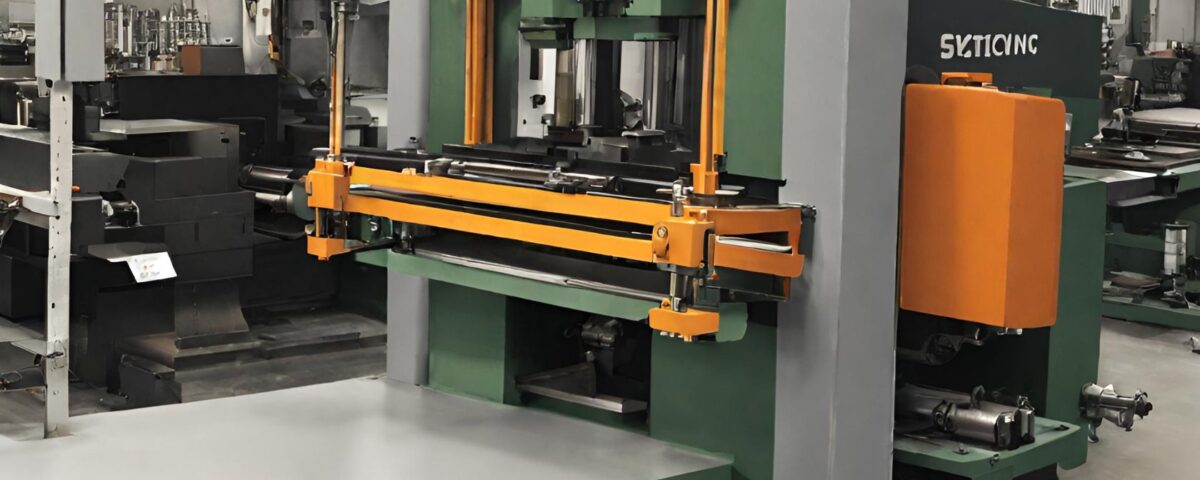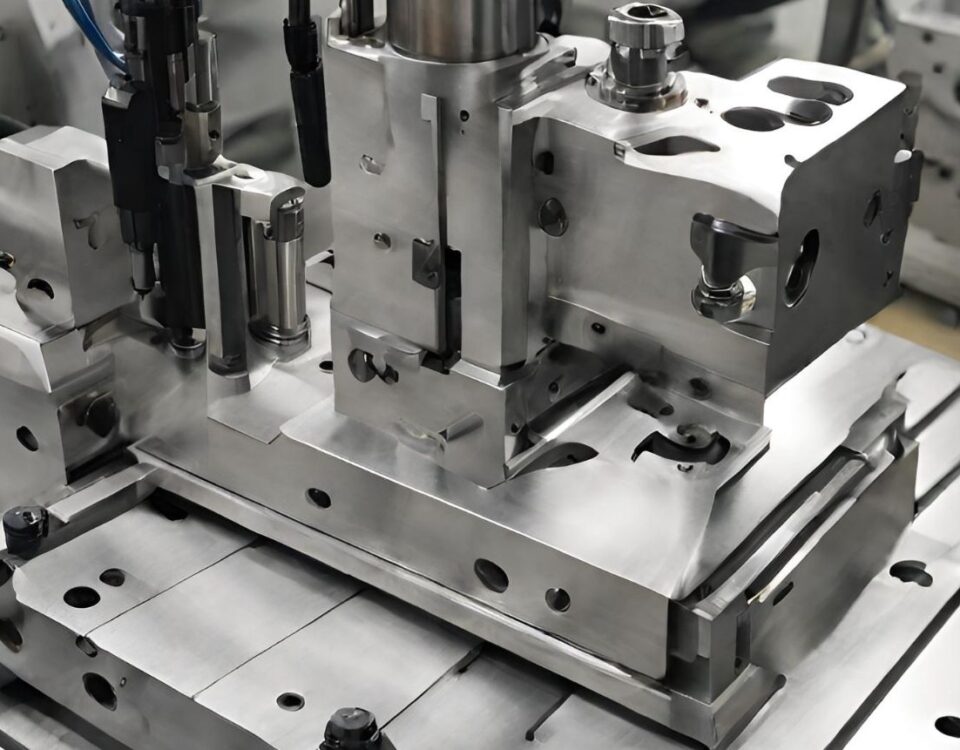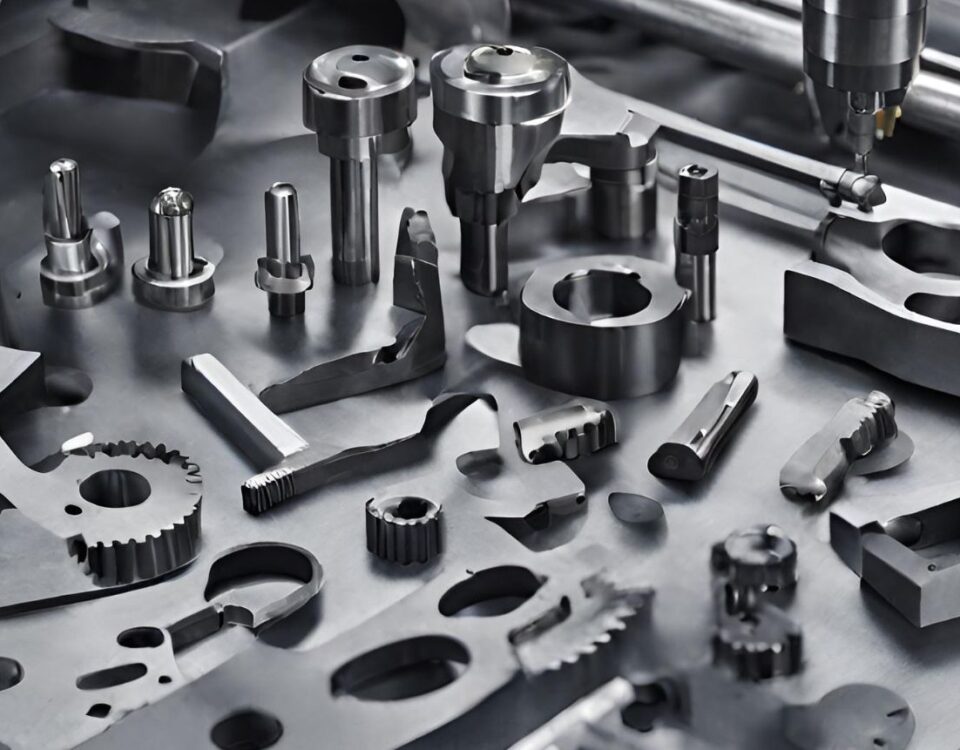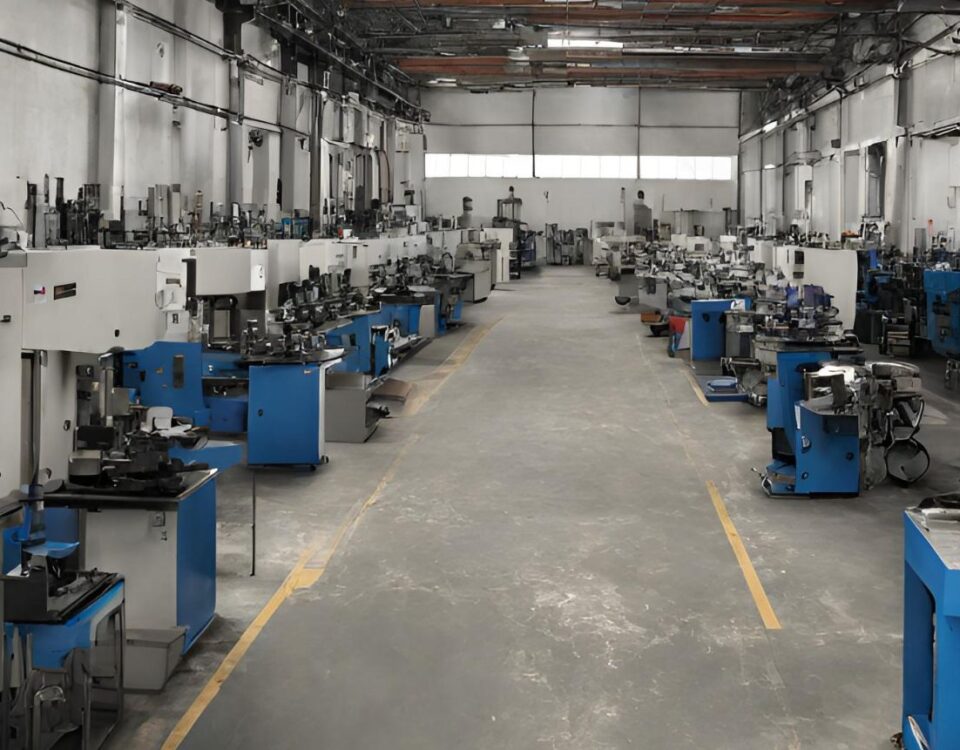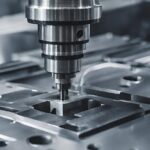
7 Factors to Consider When Selecting Online Machining Services
1 April 2024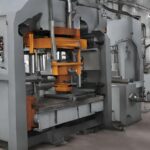
Beginner’s Guide to Aluminum Casting
5 April 2024Imagine you’re about to embark on a journey into the heart of your industry’s production secrets, where precision and creativity collide. This is the world of custom metal stamping, a realm where metal transforms into art and utility in the blink of an eye.
Custom metal stamping is the process of shaping metal into specific designs using high-pressure machinery and dies. It’s an essential service for industries requiring tailor-made parts with high precision and durability, such as automotive, aerospace, and electronics.
Let’s dive deeper into this fascinating process and uncover the intricacies that make it a cornerstone of modern manufacturing.
What Is Custom Metal Stamping?
Custom metal stamping is an industrial process crucial to the manufacturing world, where metal sheets are transformed into specific shapes or designs through the application of intense pressure and specialized machinery. This process is the backbone of numerous industries, enabling the mass production of parts that are fundamental to the automotive, aerospace, electronics, and medical device sectors, among others. By using custom-engineered dies and high-pressure machinery, businesses can produce components that meet precise specifications with remarkable accuracy and efficiency.
The beauty of custom metal stamping lies in its versatility and adaptability. Whether you need intricate components for electronic devices or robust parts for automotive applications, this process can be tailored to meet diverse requirements. With the ability to work with a wide range of metals – from aluminum and steel to precious metals like gold and silver – custom metal stamping supports a broad spectrum of product designs, ensuring that each piece meets the high standards of quality and durability demanded by today's industries. This adaptability makes it an invaluable tool in the quest for innovation and excellence in manufacturing.
Advantages and Disadvantages of Custom Metal Stamping
| Advantages | Disadvantages |
|---|---|
| High Efficiency | Initial Setup Costs: High initial costs for designing and manufacturing custom dies. |
| Consistency & Quality | Less Flexible for Short Runs: Economically less viable for small quantity production due to setup costs. |
| Speed of Production | Material Limitations: Some complex designs may require special materials, increasing costs and complexity. |
| Cost-Effectiveness for Large Volumes | Equipment Costs: Requires significant investment in stamping presses and other machinery. |
| Versatility | Design Restrictions: Certain intricate designs may be challenging to achieve without advanced techniques. |
| Ability to Work with Various Materials | Dependency on Skilled Labor: Requires skilled operators for setup, maintenance, and operation of stamping equipment. |
| Precision & Durability of Parts | Environmental Impact: The process can be energy-intensive and produce metal waste and by-products. |
Custom metal stamping offers a blend of high efficiency, quality, and cost-effectiveness for large volume production. Its ability to produce consistent and durable parts across a range of materials makes it a cornerstone of modern manufacturing. However, the process does come with challenges, including high initial costs, potential limitations on design complexity, and environmental considerations. Despite these drawbacks, the advantages often outweigh the disadvantages, especially for applications requiring high precision and large-scale production.

How Does Custom Metal Stamping Work?
Custom metal stamping is a dynamic process that begins with the meticulous design of a die, a specialized tool used to cut and shape metal into the desired form. This die is custom-made for each project, ensuring that every detail of the final product meets specific requirements. Once the die is prepared, sheets or coils of metal are fed into a stamping press where the die is pressed into the metal with tremendous force. This action can be simple, involving a single stage for straightforward shapes, or complex, requiring multiple stages and dies to achieve intricate designs and features.
The magic of custom metal stamping lies in its ability to produce components with precision and repeatability. As the metal is pressed by the die, it undergoes deformation to take on the new shape, with processes such as punching, bending, embossing, and coining being employed to create the final product. This method is highly efficient, allowing for the rapid production of large quantities of parts. Moreover, it’s adaptable to a wide variety of metals, making it a versatile solution for industries ranging from electronics to aerospace, where precision and durability are
Types of Custom Metal Stamping
Custom metal stamping encompasses a variety of techniques, each tailored to meet specific manufacturing needs and complexities. Progressive die stamping, for example, is a highly efficient method that performs multiple operations on a metal strip as it passes through a series of progressive stations within a single tool. This technique is ideal for producing high volumes of complex parts with tight tolerances. Deep drawing, on the other hand, is used to create parts with a depth greater than their diameter, such as automotive components and kitchen sinks, by drawing a sheet metal blank into a forming die.
Another notable technique is fourslide stamping, or multislide stamping, which is particularly suited for producing intricate parts with multiple bends and twists. This method utilizes horizontal alignment and four slides to manipulate a metal strip in various directions, offering greater flexibility in part design and complexity. Each of these types of custom metal stamping has its unique set of advantages, enabling manufacturers to choose the most appropriate method based on the specific requirements of their project, such as part complexity, volume, and material properties. This diversity in stamping techniques ensures that custom metal stamping remains a versatile and indispensable tool in the manufacturing industry.
Key Processes in Custom Metal Stamping
The custom metal stamping process is distinguished by several key techniques, each serving a specific purpose in the creation of metal parts. Punching and blanking are fundamental processes used to cut pieces out of a metal sheet, with punching creating holes and blanking cutting out parts to a specific shape. These methods are essential for creating the initial form of the part, laying the groundwork for further refinement.
Further into the process, bending and coining operations add dimension and detail to the parts. Bending alters the metal's shape without altering its thickness, crucial for forming angles and curves. Coining, a high-pressure process, precisely shapes metal by squeezing it into a die, ensuring parts meet exact specifications. These techniques, among others in custom metal stamping, combine to transform raw metal sheets into finished products with precision and efficiency, catering to the diverse needs of various industries.

Advanced Techniques in Custom Metal Stamping
Innovation in custom metal stamping has led to the development of advanced techniques that enhance precision, efficiency, and the ability to create increasingly complex parts. Microstamping stands out as a revolutionary method, enabling the production of extremely small and detailed components. This technique is particularly valuable in the electronics and medical industries, where the demand for miniature parts with high precision is ever-increasing. Microstamping allows for the manipulation of tiny pieces with intricate designs, pushing the boundaries of what can be achieved through traditional stamping methods.
Laser cutting is another advanced technique that has become indispensable in custom metal stamping. It provides unparalleled accuracy and speed in cutting metal, offering a non-contact method that minimizes material waste and deformation. Laser cutting can be precisely controlled to create complex shapes and fine details, making it ideal for custom projects that require a high degree of customization. These advanced techniques, combined with traditional stamping processes, enable manufacturers to meet the evolving needs of industries with innovation and agility, ensuring that even the most challenging projects can be realized.
Custom Metal Stamping Machines and Tools
The core of custom metal stamping lies in its specialized machinery and tools, which range from traditional mechanical presses to advanced servo-driven presses. These machines are designed to handle various stamping techniques, from deep drawing to progressive die stamping, with precision and speed. Equally important are the dies and tooling, custom-engineered for each project to shape the metal into the desired form. This equipment represents a significant investment but is crucial for achieving the high efficiency, accuracy, and repeatability demanded in custom metal stamping. Modern advancements in press technology, including automation and computer controls, have further enhanced the capabilities of metal stamping, allowing for more complex, precise, and cost-effective production of parts.
Design Considerations for Custom Metal Stamping
When designing for custom metal stamping, several critical factors must be taken into account to ensure the final product meets all specifications and performance requirements. Material selection plays a pivotal role, as each type of metal has its own properties, such as strength, ductility, and corrosion resistance, which influence the part’s functionality and durability. Additionally, designers must consider the part’s geometry, including tolerances, bending radii, and the inclusion of features like embossments or ribs, to ensure manufacturability without compromising the part's integrity.
Moreover, the stamping process itself imposes certain limitations and considerations, such as the direction of the grain flow in the metal, which can affect the part’s strength and appearance. Designers must work closely with engineers and toolmakers to optimize the design for the stamping process, balancing complexity and cost-effectiveness while avoiding common issues such as tearing or warping. This collaborative approach allows for the creation of high-quality, precision parts that meet the stringent requirements of industries reliant on custom metal
The Role of CAD in Custom Metal Stamping
Computer-Aided Design (CAD) software has become an indispensable tool in the custom metal stamping industry, revolutionizing the way parts are designed and manufactured. CAD allows for the precise and detailed modeling of parts, enabling engineers and designers to visualize and refine their designs before any metal is cut. This capability significantly reduces the risk of errors and material waste, streamlining the design process and enhancing efficiency.
Moreover, CAD software facilitates the simulation of the metal stamping process, predicting how the material will behave under various conditions. This predictive analysis helps in identifying potential issues such as stress points or areas prone to deformation, allowing for adjustments to the design or process before production begins. By integrating CAD technology into the workflow, custom metal stamping operations can achieve higher accuracy, faster turnaround times, and more innovative solutions, meeting the demands of a competitive market with precision and agility.
Applications of Custom Metal Stamping
Custom metal stamping's versatility makes it indispensable across a wide range of industries, each with its unique requirements and challenges. In the automotive sector, for example, it is used to manufacture components that require high strength and precision, such as chassis parts, engine components, and transmission parts. This process ensures these components can withstand the rigorous demands of automotive applications, from durability to safety standards. Similarly, in the aerospace industry, custom metal stamping produces parts for aircraft structures, engines, and landing gear, where the premium is placed on lightweight materials and utmost reliability.
The electronics industry also benefits significantly from custom metal stamping, as it allows for the production of small, complex components like connectors, contacts, and brackets. These components must meet strict specifications for conductivity and fit within compact spaces, showcasing the process's ability to work with a variety of metals and produce parts with tight tolerances. Beyond these, custom metal stamping finds applications in medical devices, consumer goods, and industrial machinery, illustrating its broad applicability. The process's adaptability to different materials and complex designs enables innovation and efficiency across sectors, highlighting its critical role in modern manufacturing.
FAQ
1. Is Custom Metal Stamping expensive?
Custom metal stamping's cost-effectiveness shines in high-volume productions. Initial tooling and setup represent significant investments, but these costs are amply offset by the lower per-unit cost in large runs. Material choice and complexity further influence the price, making it a scalable option for various needs.
2. Can any metal be used for Custom Metal Stamping?
Virtually any metal can be adapted to custom metal stamping, from common steel and aluminum to exotic alloys and precious metals. The choice hinges on the intended application, considering factors like strength, durability, and corrosion resistance to match the part’s requirements with the material’s properties.
3.How long does it take to produce a custom metal stamped part?
The timeline from design to production in custom metal stamping is project-specific. Initial stages involving design and tool creation are the most time-consuming. However, once this phase is completed, stamping allows for rapid mass production, significantly shortening the time from concept to market.
4. Are there size limitations for Custom Metal Stamping?
Size and thickness limitations in custom metal stamping are bound by machine capacity and tooling design. Modern stamping presses offer flexibility for a wide range of sizes, yet extremely large or thick parts may require alternative or supplementary manufacturing techniques to meet specifications.
5. How does Custom Metal Stamping compare to casting?
While both processes serve to create metal parts, custom metal stamping excels in speed, precision, and efficiency for thin to medium-thick metal components. Casting is preferred for complex shapes or when internal cavities are required, offering versatility in shape but typically at a higher cost and lower dimensional accuracy.
Conclusion
In the realm of manufacturing, custom metal stamping stands out as a beacon of innovation, precision, and versatility. It caters to a broad spectrum of industries, offering bespoke solutions that meet exacting standards. With the capacity to handle high-volume production while maintaining meticulous attention to detail, custom metal stamping is your gateway to unmatched efficiency and quality. If you're looking to elevate your product's quality, streamline your production process, or simply explore the boundless possibilities of metal fabrication, it's time to consider custom metal stamping. Reach out to a specialist today and discover how this transformative process can benefit your manufacturing needs.

